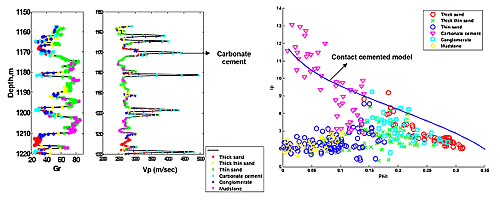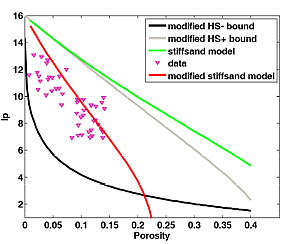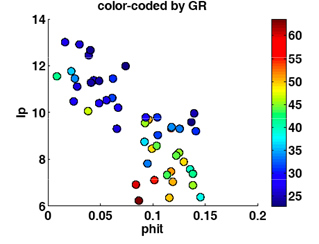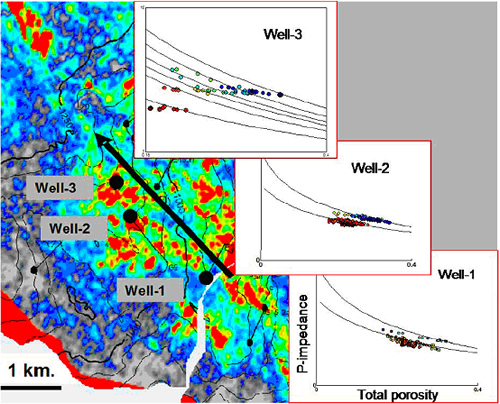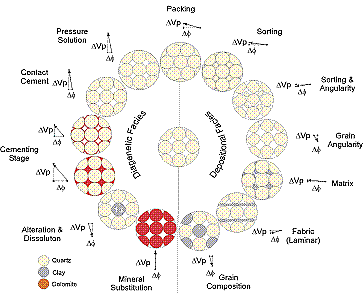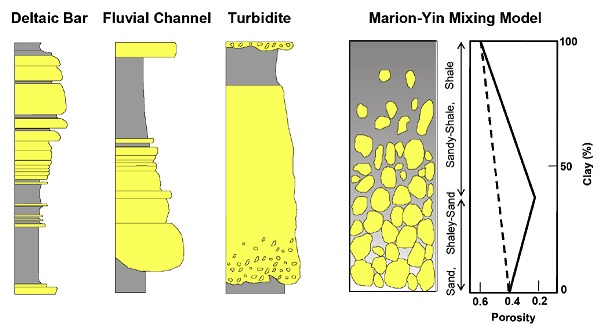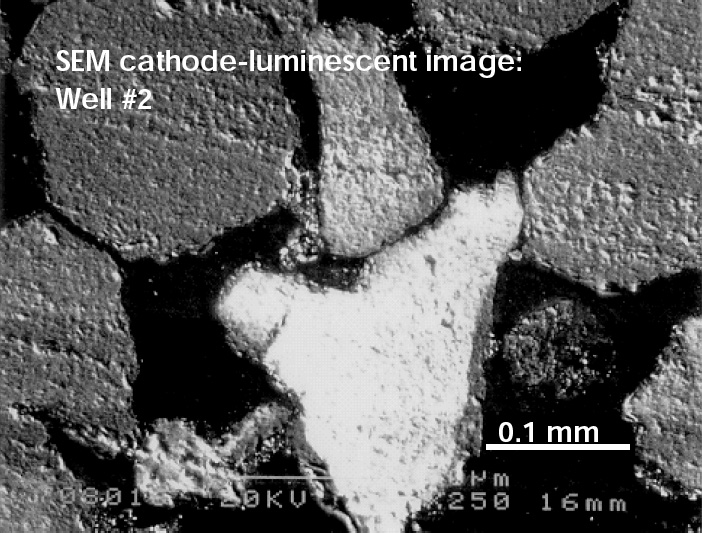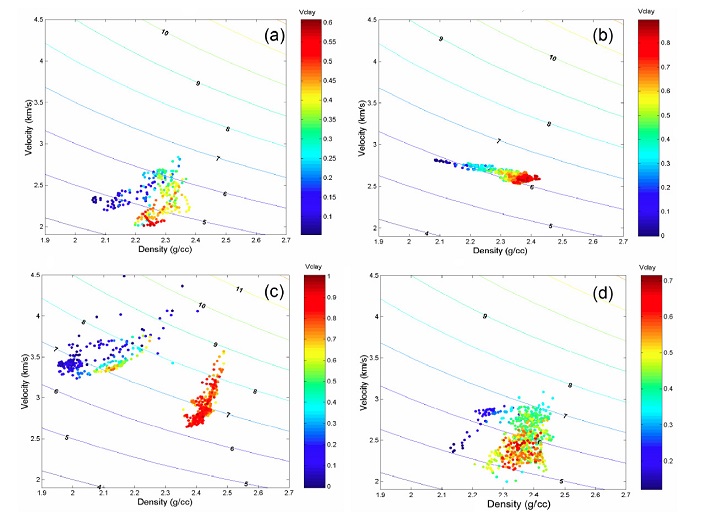Seismic stratigraphy, seismic sedimentology, and 3-D seismic geomorphology are the state-of-the-art techniques for interpretation and prediction of depositional lithofacies using seismic data. In classic seismic stratigraphy, geologists use qualitative analysis of reflection events (amplitude, apparent frequency, continuity, and geometry) to separate seismic facies. The connection to the actual lithofacies is established using sequence stratigraphic models and local calibration with well logs. Uncertainties in these methods arise from their inability to resolve features at scales lower than the dimensions of the seismic-facies groups, normally about 100 m, and from the assumption of oversimplified relationships between seismic impedance and general lithologies.
A critical factor for seismic reservoir characterization is that seismic velocities in the subsurface are related to key rock parameters such as porosity, mineralogy, microtexture, pore fluid saturation, and effective pressure. Relating sediment and rock properties to observed seismic signatures is the aim of applied rock physics in this project.
Results
Project researchers demonstrated how carbonate cementation precipitated at the key sequence stratigraphic surfaces, such as incision and flooding surfaces, impacts seismic impedance. First, well-log and core data were examined to identify correlations among parameters such as impedance, sediment composition, porosity, degree of cementation, and stratigraphic position. Next, rock physics models relating sediment parameters and elastic properties were evaluated for their ability to explain the observed patterns.
It was observed that the carbonate-cemented sandstones are extremely heterogeneous in nature, even within a depth interval of ~60 meter in the project study area, offshore Equitorial Guinea, West Africa. Their grain-size, sorting, mineralogy, clay-content, amount of cement and degree of leaching vary considerably. Two distinct impedance-porosity behaviors were identified. Carbonate-cemented sandstones from the base of incisions are usually associated with lower shaliness, lower porosity and higher P-impedance, while data from the top of flooding surfaces exhibit higher shaliness, higher porosity and lower P-impedance.
One simple rock physics model that captures the observed impedance-porosity trend is the “stiff-sand model.” For this model, the high-porosity end-member is unconsolidated sand whose initial porosity is a function of the deposited sorting and shaliness, while the low-porosity end-member is solid mineral. These two end points are joined using a Hashin-Shtrikman equation. A second modeling approach is to combine two models – the stiff-sand model that describes the elastic behavior of clay-free carbonated-cemented quartz and a soft-sediment model that describes the uncemented shales.
Benefits
About two-thirds of all the oil discovered in the United States remains in the ground, largely due to uncertainties and complexities in the nature of oil reservoirs. This project will help to mitigate some of these difficulties through improving reservoir characterization, reducing risk by more effectively quantifying geologic constraints and their seismic signatures, and quantifying the uncertainties associated with the interpretations for better decision making and risk analysis. The final benefit of this will be improved recovery, increased national petroleum reserves, and lower environmental risk through more-informed drilling and production planning.
Summary
This project consists of the following four tasks:
- Geologic controls on rock microstructure. The objectives here are (1) to identify how essential rock properties, which link reservoir properties to seismic response, evolve geologically—how they vary within stratigraphic sequences associated with different depositional settings and during the various diagenetic stages; (2) to better understand the variation of composition, fabric, and elastic properties of different types of shale and mixed lithofacies, according to their depositional environments; (3) to evaluate and develop empirical and theoretical models of porosity-depth trends for sands, shale, and mixed lithofacies.
- Quantification of elastic (seismic) signatures. The objective here is to quantify the elastic signatures of lithology, multi-scale stratigraphic cycles, textural maturity, pore pressure, and the diagenetic processes of compaction and cementation.
- Site selection. This task called for identifying an optimum dataset for the field study. Criteria for site selection include a geologically and economically interesting setting, relatively simple structure, and excellent core, log, and seismic data quality. The focus will be on clastic targets. Researchers will evaluate datasets already in house, as well as data sets from their industry affiliates.
- Validation, by integrating and interpreting reservoir field data. The objective here is to demonstrate, validate, and refine the methodology for quantitative reservoir characterization on a real field dataset.
Project researchers completed three primary efforts of the project. The first study formulated a workflow aimed at integrating the important constraints derived from sequence stratigraphy with rock physics models to reduce the uncertainty of seismic reservoir characterization. The second study focused on understanding how parameters such as grain packing and sorting influence seismic velocity. A third study preliminarily tested the new interpretational workflow on data from a turbidite setting, showing very good agreement between sequence-stratigraphic models and seismic impedance.
Sequence stratigraphy is the geologic interpretation of process/response events that can predict the likely occurrence of reservoir facies, source rocks, and seals. Traditional stratigraphic interpretation from post-stack seismic data has been predominantly qualitative, based on visual inspection of geometric patterns in the seismic reflections. However, quantitative interpretation of seismic amplitude is possible if, by using principles of sedimentology, information can be extracted about compositional maturity (mineralogy, clay content) and textural maturity (sorting, grain angularity, sphericity, and roundedness). Quantitative seismic interpretation uses rock physics to link seismic amplitude with reservoir properties such as porosity, clay-content, sorting, diagenetic cements, etc., that are estimated from the stratigraphic analysis.
It was found that the carbonate-cemented sandstones from the base of incision surfaces usually exhibit lower shaliness, lower porosity and higher P-impedance, while those from the top of flooding surfaces exhibit higher shaliness, higher porosity and lower P-impedance. In the present study area, there is abundance of fossil debris in carbonate-cemented sandstones, as evident from core observations. It is likely that the fossil debris acts as precursors to carbonate cementation at marine flooding surfaces (para-sequence boundaries). It appears that existing models describing quartz cementation of sands can be useful to describe carbonate-cemented sands. However, the carbonate-bearing sediments in this study are sedimentologically heterogeneous, exhibiting a range of grain sizes, sorting, and clay content. Optimum choice of models will be those that account for these variabilities.




